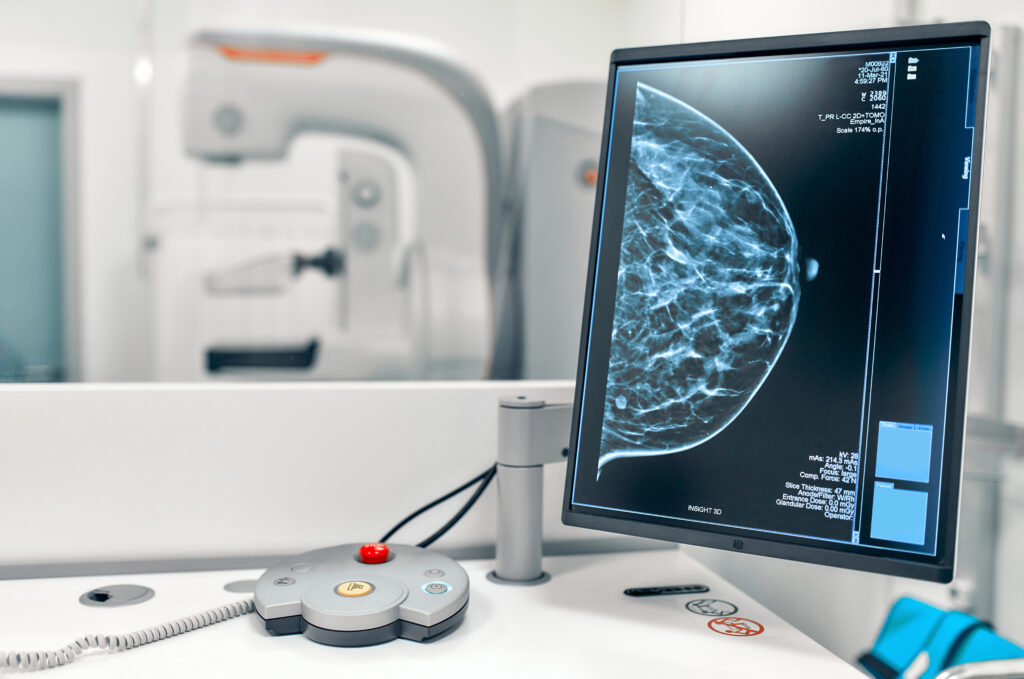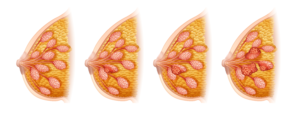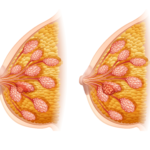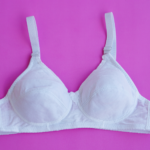Every woman needs to know her breast density because it impacts her breast cancer risk. The only way to know your breast density is by mammogram results.
What’s in the Number?
Doctors use The American College of Radiology’s Breast Imaging Reporting and Data System (BI-RADS) scoring method using a 1-4 rating system. This classification system allows radiologists to measure and describe breast density
BI-RADS 1- less than 25% Dense Breast Tissue
BI-RADS 2 – 26-50% Dense Breast Tissue
BI-RADS 3 – 51- 75% Dense Breast Tissue
BI-RADS 4 – more than 75% Dense Breast Tissue
Breast Cancer Risk
Having dense breast tissue will not affect your daily life. However, it increases the chance that breast cancer may go undetected by a mammogram since dense breast tissue can mask potential cancer. It also increases your risk of breast cancer. Scientists do not know for sure why this is true.
Mammograms
Dense breasts have more active tissues — lobules, ducts — and less fat. The only way to tell if you have high breast density is by having a mammogram. Dense breasts do not feel or look any different from breasts that have a more significant proportion of fatty tissue.
Breast density often changes over time. Younger women typically have a higher density than older women, which naturally declines after menopause. But this is not always the case. Some older women still have dense breast tissue. Taking hormone therapy may also increase breast density.
Should you have other screening tests?
At this time, experts do not agree on what other tests, if any, should be done in addition to mammograms in women with dense breasts.
Digital breast tomosynthesis (3D mammography) can find some cancers not seen on regular (2D) mammograms. Some studies have suggested that 3D mammography might benefit women with dense breasts. It can be used as a screening test instead of standard mammography, although it is not yet available at all imaging centers.
Studies have shown that breast ultrasound and possibly magnetic resonance imaging (MRI) can also help find some breast cancers that can’t be seen on mammograms. But ultrasound and MRI can also show more findings that are not cancer. This can lead to more tests and unnecessary biopsies. And the cost of an ultrasound or MRI may not be covered by insurance.
Talk to your healthcare provider about whether you should consider these tests.
Are there clinical trials for women with dense breasts?
Yes, ongoing and completed clinical trials related to dense breasts are studying better ways to detect breast cancer in women with dense breasts. You can also contact NCI’s Cancer Information Service for tailored clinical trial searches related to breast density and breast cancer screening.
RESOURCES
CDC – Centers for Disease Control and Prevention
American Cancer Society
Mayo Clinic
The George Washington University Hospital









